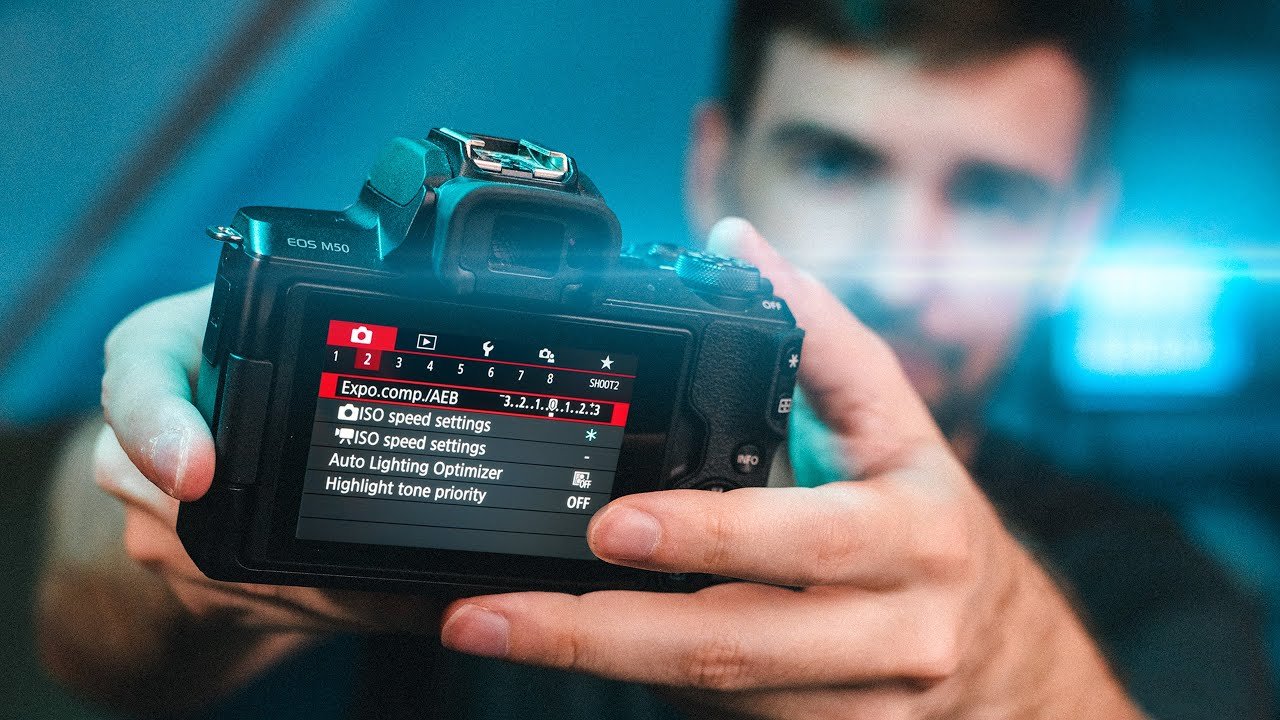Whether you’re a seasoned videographer or just starting out, knowing how to adjust your camera settings is essential for achieving professional-quality videos. From frame rate and shutter speed to ISO and aperture, each setting plays a crucial role in the final look of your footage. This guide will walk you through the best camera settings for producing professional-looking videos.
1. Set the Right Frame Rate for Smooth Motion
The frame rate determines how many frames your camera captures per second and influences the fluidity of the motion in your video. Different frame rates offer different effects, and selecting the appropriate one depends on the style of your video.
- 24 frames per second (fps): This is the standard frame rate for cinematic videos, offering a natural, film-like motion. It’s ideal for narrative filmmaking or any video where you want a traditional, professional look.
- 30 fps: Often used for television broadcasts and live streaming, this frame rate provides smoother motion than 24 fps. It’s great for online content and videos where realism is key.
- 60 fps: Use this frame rate for sports, action, or fast-moving subjects. It can also be used for slow-motion effects when played back at 24 or 30 fps.

Tip: Stick with 24 fps for a cinematic feel and 60 fps when you want to capture fast-moving scenes.
2. Adjust Your Shutter Speed
Shutter speed refers to how long the camera’s sensor is exposed to light for each frame. For smooth motion and minimal motion blur, your shutter speed should typically be double your frame rate.
- For 24 fps, use a shutter speed of 1/48 or 1/50.
- For 30 fps, use a shutter speed of 1/60.
- For 60 fps, set your shutter speed to 1/120.
Using slower shutter speeds can introduce motion blur, while faster shutter speeds can make your footage look choppy and unnatural.
Tip: Stick to the “double the frame rate” rule for natural motion and experiment with faster shutter speeds for specific effects.
3. Control Your Aperture (f-Stop) for Depth of Field
Aperture (measured in f-stops) controls the amount of light entering the lens and determines the depth of field, which is the range of focus in your shot.
- A wide aperture (low f-stop number, such as f/1.8 or f/2.8) creates a shallow depth of field, which blurs the background and emphasizes the subject. This is ideal for portraits and cinematic shots.
- A narrow aperture (higher f-stop number, like f/8 or f/11) brings more of the scene into focus, making it useful for landscape or wide shots where you want more detail.
Tip: Use a wide aperture for professional-looking, cinematic shots with background blur and a narrow aperture when you need everything in the frame to be in focus.
4. Adjust ISO for Proper Exposure
ISO controls your camera’s sensitivity to light. In low-light environments, increasing the ISO will brighten your footage, but too high an ISO can introduce noise (grainy footage). Keep your ISO as low as possible for the best quality.
- ISO 100-400: Ideal for outdoor, well-lit environments.
- ISO 400-800: Suitable for indoor shoots with controlled lighting.
- ISO 800 and above: Necessary for low-light environments but be mindful of the noise that may appear in your footage.
Tip: Start with a lower ISO and only increase it when necessary to avoid grain in your video.
5. Use the Right White Balance for Accurate Colors
White balance ensures that the colors in your video appear natural and consistent. Most cameras have presets for different lighting conditions, such as daylight, tungsten, and fluorescent, but you can also set the white balance manually.
- Auto white balance can work for quick shoots, but it may shift during filming.
- Manual white balance lets you lock in your color temperature (measured in Kelvin) based on the lighting conditions.
- 5600K: Ideal for daylight conditions.
- 3200K: For tungsten or indoor lighting.
Tip: Use a gray card to get a precise manual white balance reading before shooting in variable light conditions.
6. Choose the Right Picture Profile for Color Grading
Picture profiles determine how your camera processes color, contrast, and sharpness. If you plan to do heavy color grading in post-production, it’s best to shoot in a flat or log picture profile, which captures more dynamic range and detail.
- Standard or natural profiles: These work well for videos that don’t require much color correction.
- Flat or log profiles: These are ideal for professional projects where you’ll do post-production color grading. They preserve highlights and shadows, allowing for more flexibility when adjusting colors later.
Tip: Shoot in a flat profile like Sony’s S-Log or Canon’s C-Log if you plan to color grade your footage.
7. Use ND Filters for Outdoor Shoots
Neutral Density (ND) filters act like sunglasses for your camera lens, reducing the amount of light entering the camera. They allow you to maintain your desired aperture and shutter speed without overexposing your footage, especially in bright outdoor environments.
- Use an ND filter when shooting outdoors on a sunny day to maintain a shallow depth of field or to keep your shutter speed in check.
- Variable ND filters are adjustable and offer more flexibility than fixed-strength filters.
Tip: Invest in a good-quality ND filter for outdoor shoots to prevent overexposed, washed-out footage.
8. Focus on Sound Quality
While camera settings are crucial, don’t forget that sound quality is just as important. Poor audio can ruin an otherwise professional-looking video. Use an external microphone instead of your camera’s built-in mic for higher-quality sound.
- Lavalier mics: Ideal for interviews and dialogue-heavy scenes.
- Shotgun mics: Great for directional sound recording when you need to capture audio from a specific direction.
Tip: Always monitor your audio levels while recording to avoid distortion and ensure clarity.
Conclusion
Mastering camera settings is essential for producing professional-looking videos. By understanding the relationship between frame rate, shutter speed, aperture, ISO, and white balance, you can capture high-quality footage that looks polished and cinematic. Don’t forget to experiment with different settings and test your camera’s capabilities in various lighting conditions to discover your unique style as a videographer.
With these tips, you’ll be well on your way to shooting videos that look truly professional.











